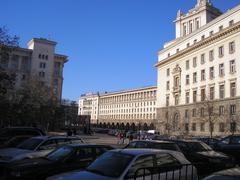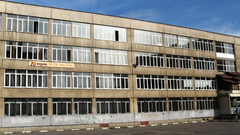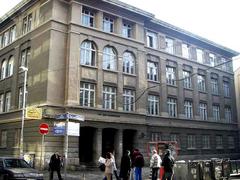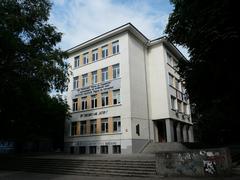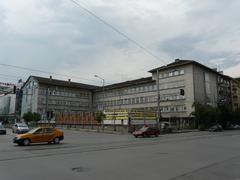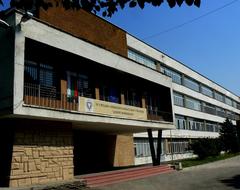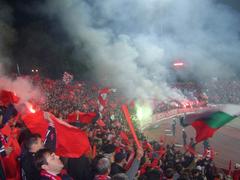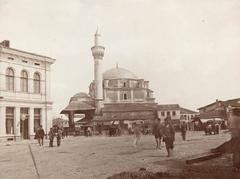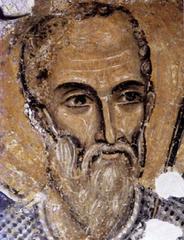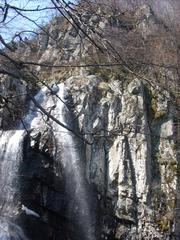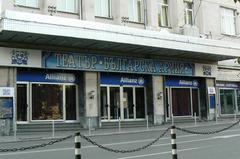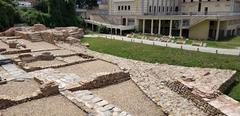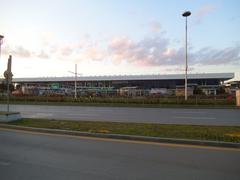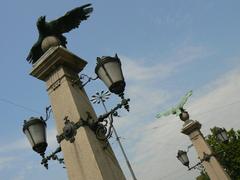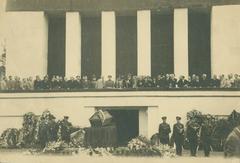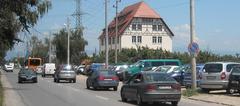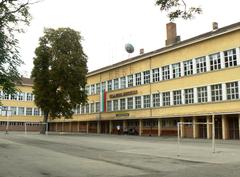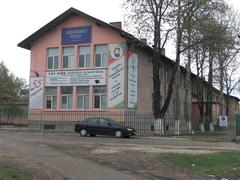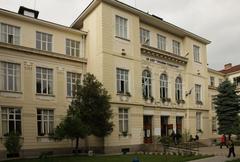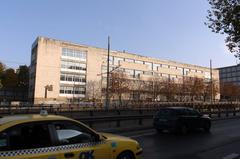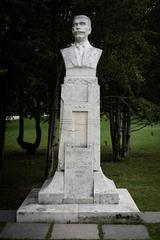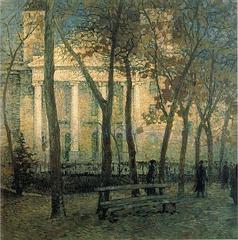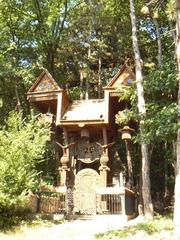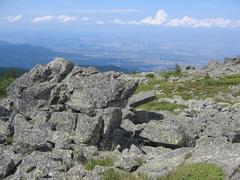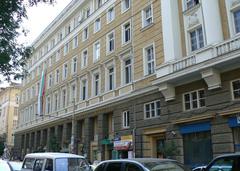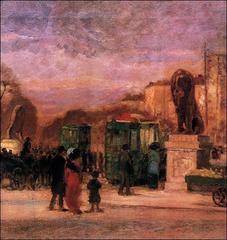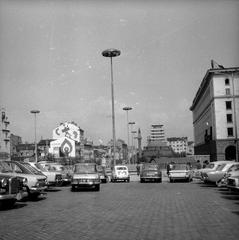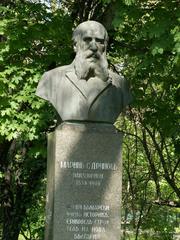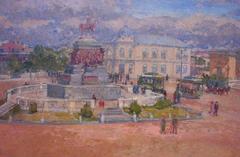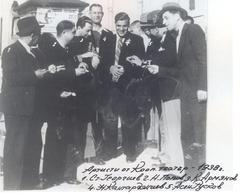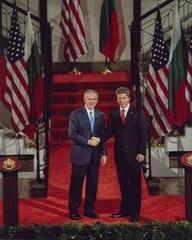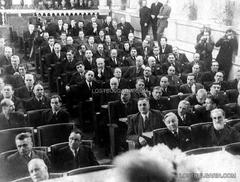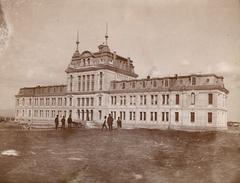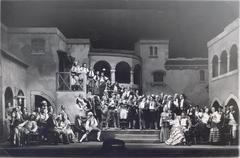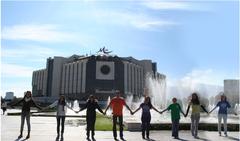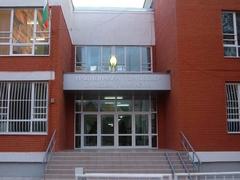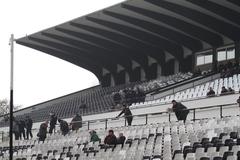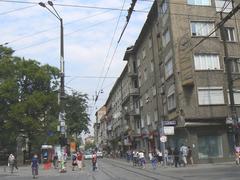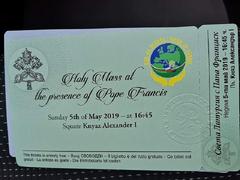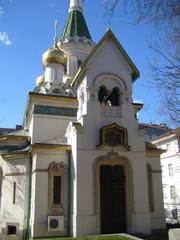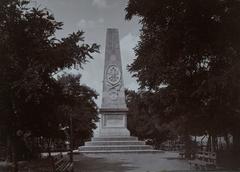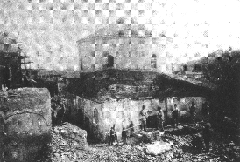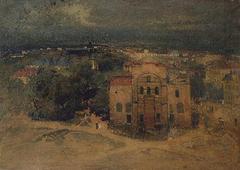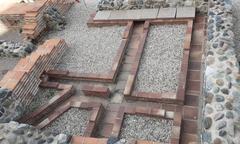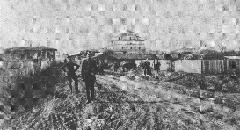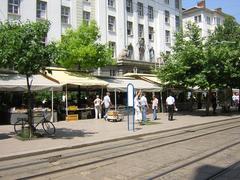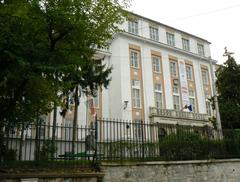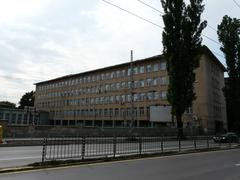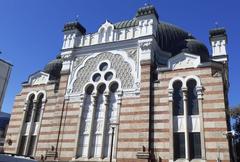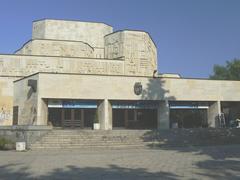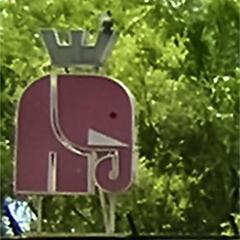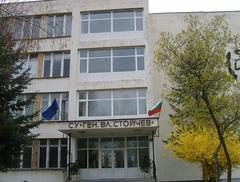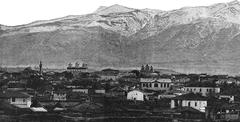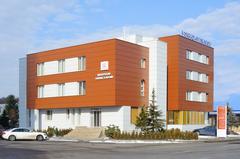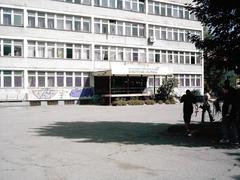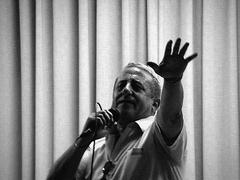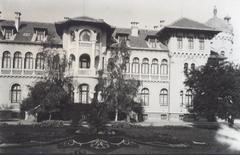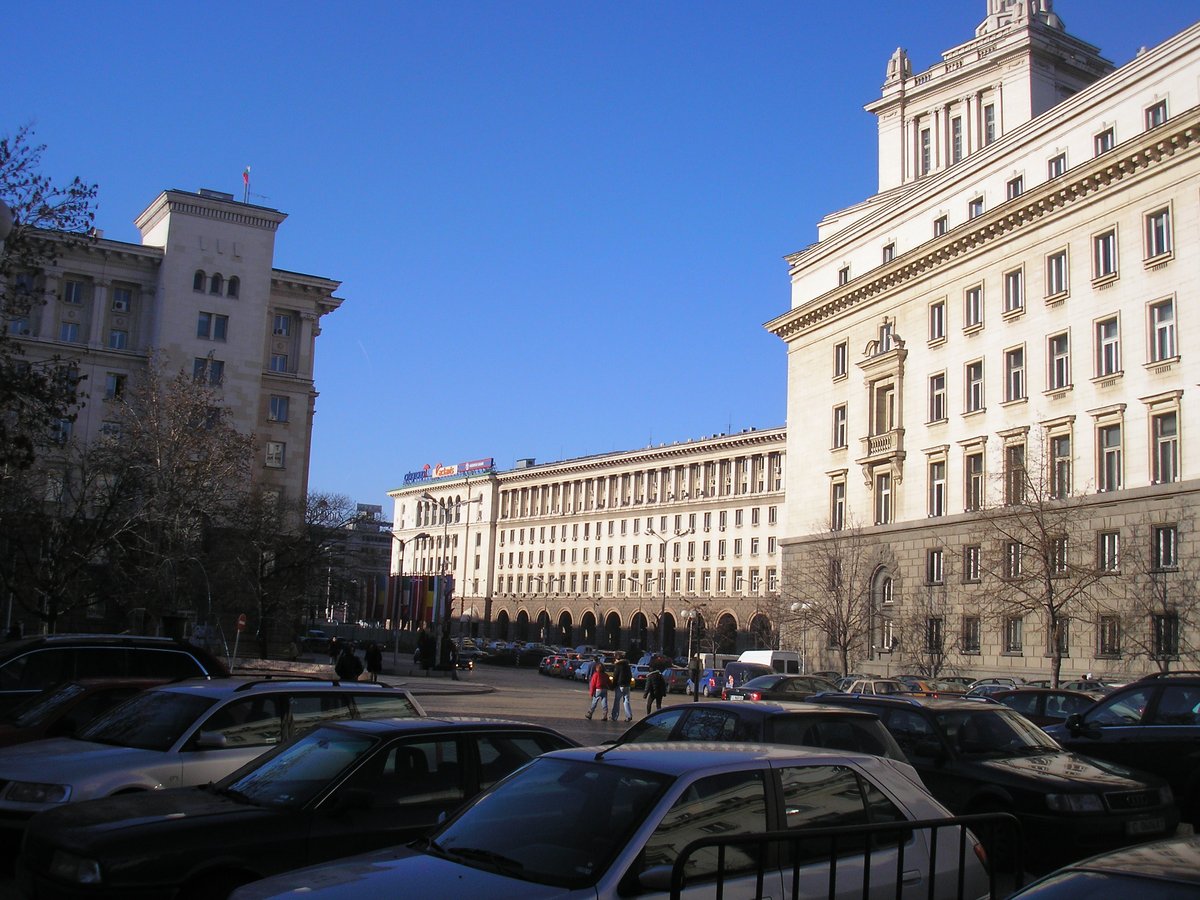
Largo Sofia Visiting Hours, Tickets, and Historical Sites Guide
Date: 14/06/2025
Introduction: Discovering Largo Sofia’s Historical Layers
In the vibrant heart of Sofia, Bulgaria’s capital, the Largo stands as a remarkable testament to the city’s unique history. This architectural ensemble seamlessly weaves together the ancient Roman ruins of Serdica, medieval religious sites, and monumental socialist-era buildings, offering visitors an immersive journey through Bulgaria’s evolving identity. Easily accessible via Sofia’s metro, the Largo is a must-see for history enthusiasts, architecture lovers, and casual travelers alike. This detailed guide equips you with essential information on visiting hours, ticketing, accessibility, and nearby attractions, while exploring the site’s architectural, cultural, and civic significance.
Table of Contents
- Introduction
- Ancient Foundations: Serdica’s Roman Heritage
- Medieval and Ottoman Era Transformations
- War, Reconstruction, and the Creation of the Largo
- Architectural Significance: Socialist Classicism
- Visiting Largo Sofia: Hours, Tickets, and Practical Information
- Top Photographic Spots
- The Largo’s Role in Sofia’s Democratic Transition
- The Largo Today: Culture and Community
- Key Historical Milestones
- Frequently Asked Questions (FAQs)
- Conclusion and Visitor Resources
Ancient Foundations: Serdica’s Roman Heritage
The Largo sits atop the ancient city of Serdica, founded by the Thracian Serdi tribe and later expanded under Roman rule. Serdica flourished as a key administrative and commercial hub during the Roman and early Byzantine periods (4th–6th centuries CE), boasting six Roman streets, early Christian basilicas, public baths, and grand residences. Archaeological excavations beneath the Largo and Independence Square have revealed these remarkable remains, including the main east-west thoroughfare, the decumanus maximus. Glass domes now protect and display these ruins, offering a direct view into Sofia’s distant past (Sofia History Museum, Wikipedia).
Medieval and Ottoman Era Transformations
After the fall of the Roman Empire, Serdica persisted through the medieval era, seeing transitions under Byzantine, Bulgarian, and later Ottoman rule. The area’s religious significance is highlighted by the Church of St. Petka, built atop a Roman tomb. During the Ottoman period, Sofia’s urban landscape evolved, but much of the ancient city remained buried, only to be rediscovered in the 20th century (SoSofia).
War, Reconstruction, and the Creation of the Largo
World War II devastated Sofia’s city center, prompting a bold urban renewal led by Bulgaria’s communist government. In the early 1950s, a new representative civic center was commissioned, symbolizing socialist ideals and authority. The resulting Largo ensemble, constructed between 1952–1958, was designed in the Socialist Classicism style and became a national architectural landmark (Wikipedia).
Architectural Significance: Socialist Classicism
The Largo is a rare and prominent example of Socialist Classicism in Southeastern Europe. Its three monumental structures define the city’s central axis:
- Former Party House: Once the Bulgarian Communist Party headquarters, now housing the National Assembly. The red star that once crowned its roof was replaced by the Bulgarian flag after 1989.
- Council of Ministers: Government administration building.
- TZUM Department Store: A commercial hub, symbolizing the city’s economic evolution.
These buildings, arranged around Independence Square and paved with Sofia’s signature yellow cobblestones, feature grand colonnades, neoclassical motifs, and imposing facades. The ensemble’s spatial organization creates a ceremonial approach to the city center, blending authority with public accessibility (Everything Explained Today, Kathmandu & Beyond).
Visiting Largo Sofia: Hours, Tickets, and Practical Information
Visiting Hours
- Outdoor Areas: The Largo’s plazas and glass-domed archaeological zones are open 24/7.
- Archaeological Complex: Access to the ruins beneath the glass domes is typically available from 10:00 AM to 6:00 PM daily. Confirm hours online before your visit.
Tickets and Admission
- Outdoor Areas: Free of charge.
- Archaeological Complex: Entry requires a ticket (approx. 5 BGN/2.5 EUR for adults, with discounts for students, seniors, and groups).
- Guided Tours: Additional fees apply. Book in advance, especially during peak seasons (Sofia History Museum).
Accessibility
- Mobility: Ramps and elevators connect the Largo to Serdika metro stations; most areas are wheelchair accessible, though some ancient ruins may be uneven.
- Metro Access: Serdika and Serdika II stations are directly beneath the Largo, served by lines M1 and M2.
- Buses & Trams: Multiple routes stop near Knyaginya Maria Luiza Boulevard.
- Walking: The Largo is minutes from Sofia’s pedestrian zones and major historical sites.
Nearby Attractions
- Alexander Nevsky Cathedral: Bulgaria’s premier Orthodox cathedral is a short walk east.
- National Art Gallery & Ethnographic Museum: Housed in the former royal palace.
- St. George Rotunda: Sofia’s oldest preserved building, with Roman origins and medieval frescoes.
- Banya Bashi Mosque & Sofia Synagogue: Reflecting Sofia’s religious diversity (The Tourist Checklist, Adventure Backpack).
Guided Tours and Events
- Walking Tours: Local operators offer in-depth tours focused on the Largo’s history and architecture.
- Cultural Events: Independence Square and the glass-domed area often host concerts, festivals, and exhibitions.
Top Photographic Spots
Photographers will find dramatic contrasts at the Largo: ancient Roman ruins viewed through glass, the imposing neoclassical facades, and the medieval St. Petka Church. Early morning and late afternoon light are ideal for capturing textures and architectural details.
The Largo’s Role in Sofia’s Democratic Transition
After 1989, the Largo became a symbol of Bulgaria’s new democratic era. Notable changes included the removal of the red star and Lenin statue, the renaming of the square to Independence Square, and urban renewal projects revealing the ancient ruins beneath. The area is now a venue for public gatherings, civic protest, and cultural celebration (Atlas Obscura).
The Largo Today: Culture and Community
The Largo is not just a government and commercial center; it is a living cultural hub. The archaeological spaces beneath the glass domes host exhibitions and music festivals, while the surrounding plazas are animated by daily city life. The area’s blend of ancient, religious, and modern architecture encapsulates Sofia’s ongoing story (SoSofia; Cestee).
Key Historical Milestones
- Roman Serdica (1st–6th centuries CE): Flourishing Roman city; archaeological remains now visible.
- Medieval/Ottoman Periods: Construction of key religious landmarks.
- WWII Bombing (1943–1944): Destruction precipitates urban redevelopment.
- 1952–1958: Construction of the Largo ensemble.
- Post-1989: Democratic reforms and urban renewal expose Sofia’s ancient roots (Wikipedia; Atlas Obscura).
Frequently Asked Questions (FAQs)
Q: Are there entrance fees to visit the Largo?
A: Outdoor areas are free. The Archaeological Complex has a small admission fee.
Q: What are the best visiting hours?
A: Early mornings and late afternoons offer fewer crowds and optimal lighting.
Q: Is the Largo accessible via public transport?
A: Yes, Serdika metro stations are directly underneath.
Q: Can I take a guided tour?
A: Yes, many local providers offer guided visits focusing on history and architecture.
Q: Is the site accessible for visitors with disabilities?
A: Most areas are wheelchair accessible, but some ancient ruins have uneven surfaces.
Conclusion: Experience Sofia’s Living History
The Largo Sofia is an essential destination for understanding Bulgaria’s past and present. Here, you can stroll above Roman streets, admire monumental socialist architecture, and engage with Sofia’s vibrant civic life—all in a single city block. For an enhanced experience, consider joining a guided tour or using the Audiala app for audio guides. Explore more of Sofia’s top attractions, and stay updated on current events by following official tourism resources.
Visual Recommendations:
Include high-resolution images such as “Largo Sofia archaeological ruins under glass,” “Independence Square at sunset,” and “St. George Rotunda.” Interactive maps highlighting nearby attractions improve planning.
Internal Links:
- [Top Historical Sites in Sofia]
- [Guide to Sofia’s Metro System]
- [Best Walking Tours in Sofia]
External Links:
- Sofia History Museum
- Everything Explained Today
- Wikipedia
- Atlas Obscura
- SoSofia
- Kathmandu & Beyond
- Cestee
- The Tourist Checklist
- Nomad Girl
- Adventure Backpack
